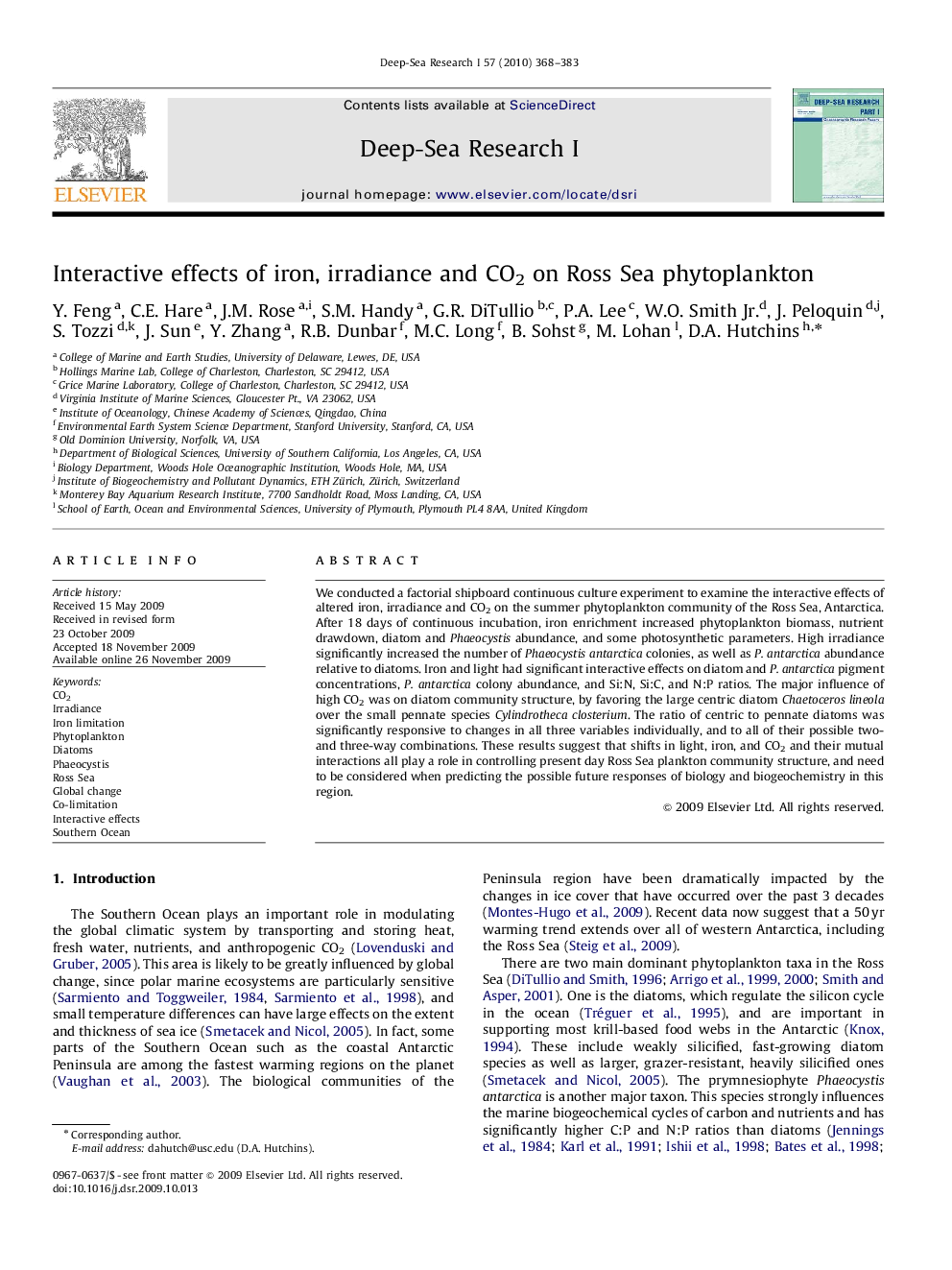| Article ID | Journal | Published Year | Pages | File Type |
|---|---|---|---|---|
| 4535380 | Deep Sea Research Part I: Oceanographic Research Papers | 2010 | 16 Pages |
We conducted a factorial shipboard continuous culture experiment to examine the interactive effects of altered iron, irradiance and CO2 on the summer phytoplankton community of the Ross Sea, Antarctica. After 18 days of continuous incubation, iron enrichment increased phytoplankton biomass, nutrient drawdown, diatom and Phaeocystis abundance, and some photosynthetic parameters. High irradiance significantly increased the number of Phaeocystis antarctica colonies, as well as P. antarctica abundance relative to diatoms. Iron and light had significant interactive effects on diatom and P. antarctica pigment concentrations, P. antarctica colony abundance, and Si:N, Si:C, and N:P ratios. The major influence of high CO2 was on diatom community structure, by favoring the large centric diatom Chaetoceros lineola over the small pennate species Cylindrotheca closterium. The ratio of centric to pennate diatoms was significantly responsive to changes in all three variables individually, and to all of their possible two- and three-way combinations. These results suggest that shifts in light, iron, and CO2 and their mutual interactions all play a role in controlling present day Ross Sea plankton community structure, and need to be considered when predicting the possible future responses of biology and biogeochemistry in this region.
